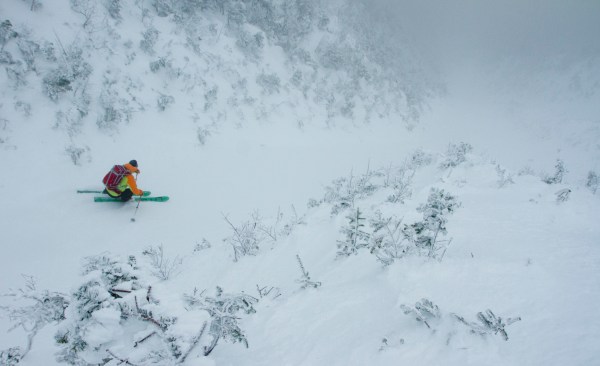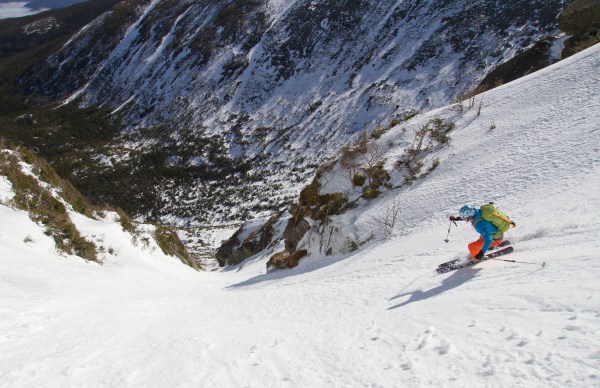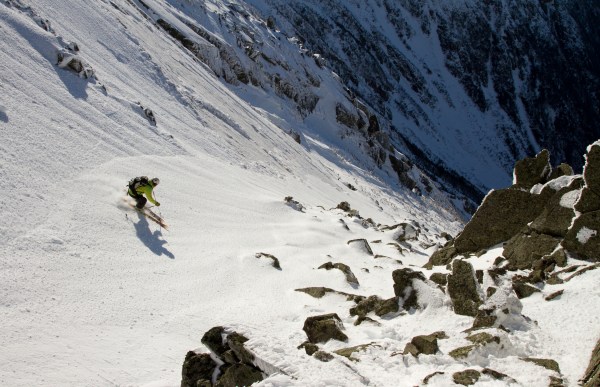While much of the backcountry terrain in the Northeastern U.S. is characterized by thickly forested hills and mountains, several areas rise well above tree line.
New Hampshire’s White Mountains lay claim to the highest mountains in the Northeast, with their crown jewel, Mount Washington, topping out at 6,288 feet above sea level—easily 2,000 feet above tree line. As is the case with most snowy alpine regions of the world, high winds, avalanches and extreme cold are all part of the game here. And thanks to glaciers, gravity and a great deal of time, “the Whites,” as they are known locally, have been shaped into a steep skiing paradise.
On a clear morning from the highest reaches of the Whites, it’s possible to spot the shimmering surface of the Atlantic Ocean, over seventy miles distant. Views to the east include the highest peaks of western Maine, while to the west rise the snowy summits of Vermont’s Green Mountains. Slide into Tuckerman’s Ravine on a sunny Saturday in May, and you might count several hundred humans sliding around on snow in every way imaginable. No doubt, Tuckerman’s is a unique destination in the world of backcountry skiing and riding. If you have not experienced Tuckerman’s, it’s worth adding to your bucket list, if only for the cultural experience. Slide into any other nearby ravine in the Whites, and you might not see a soul.
Steep skiing in the Whites dates back to the 1930s, when pioneering skiers with their heavy wooden planks and low-cut leather boots first dropped into Tuckerman’s Ravine and named its many lines. Since then, most of the steeper ravines and mountain faces in the Whites have been successfully schussed at one time or another, and few opportunities for first descents remain.
Still, outside of the prime springtime weekends in the most popular ravines, it’s easy to find solitude and untracked lines among these rugged and beautiful mountains. And it’s even easier to find yourself sliding carefully, if not hesitantly, into a 45-degree pitch that rolls out of sight below you. As long as the snow pack is stable and coated with something white and relatively edgeable, the steep, alpine terrain of the Whites is a challenging change of pace for the typically forest-dwelling skier or rider. Play your cards right, and it’s possible to link continuous descents of 4,000 vertical feet in these mountains. Pick the wrong day, and a bulletproof, no-fall crust might have you wondering why you ever got out of bed.

Skier Ian Forgays drops into a familiar, albeit cloud-filled, ravine on a cold January morning.

Skier Emily Johnson takes in one of her favorite ravines in the White Mountains of New Hampshire.

Dave Bouchard carves through the lower section of rarely filled in chute near Mount Washington, New Hampshire.

Emily Johnson savors fresh corn snow while descending a steep, untracked gully in New Hampshire’s Presidential Range.

Ian Forgays makes the most of an edgeable veneer of rime near Mount Madison, New Hampshire.
